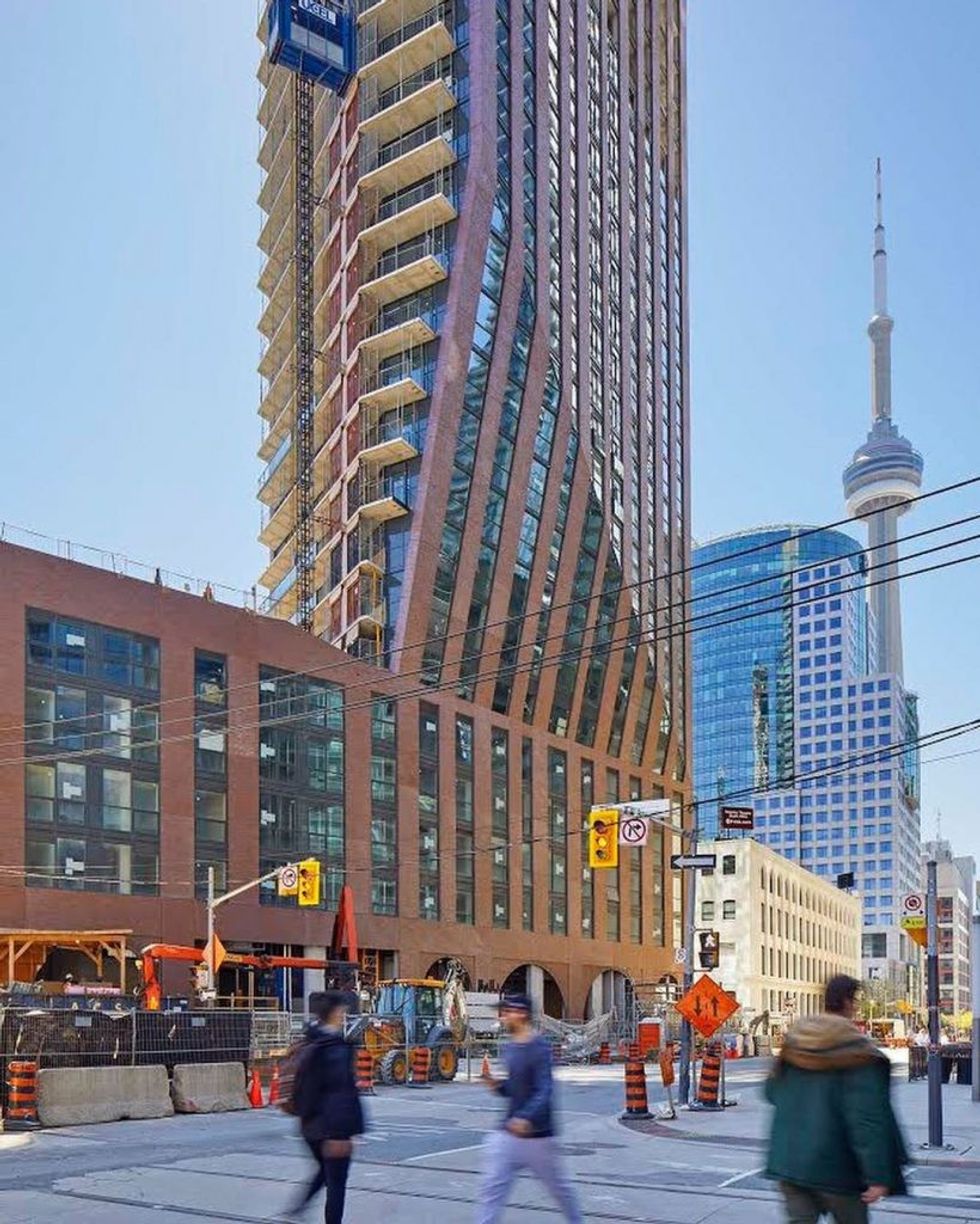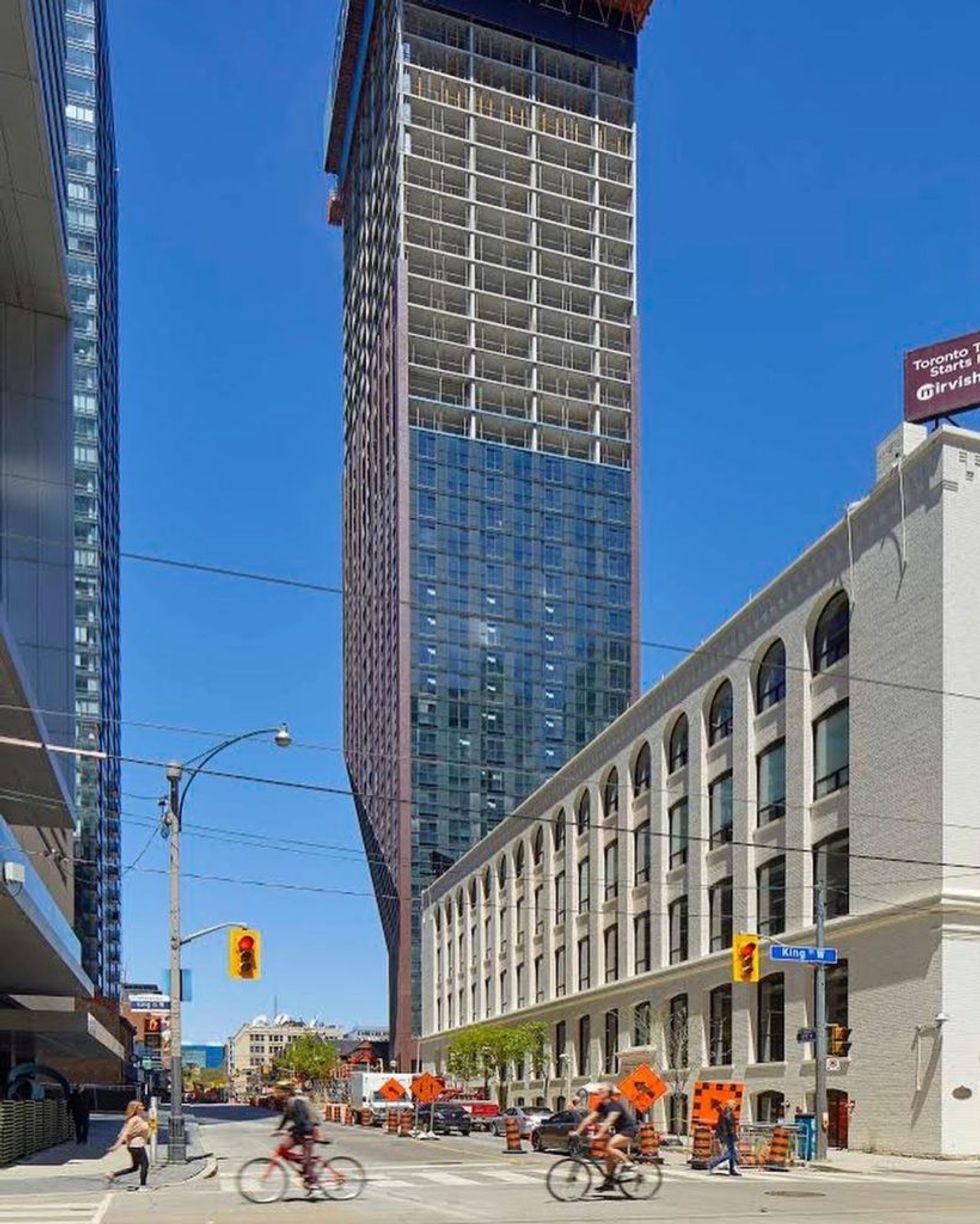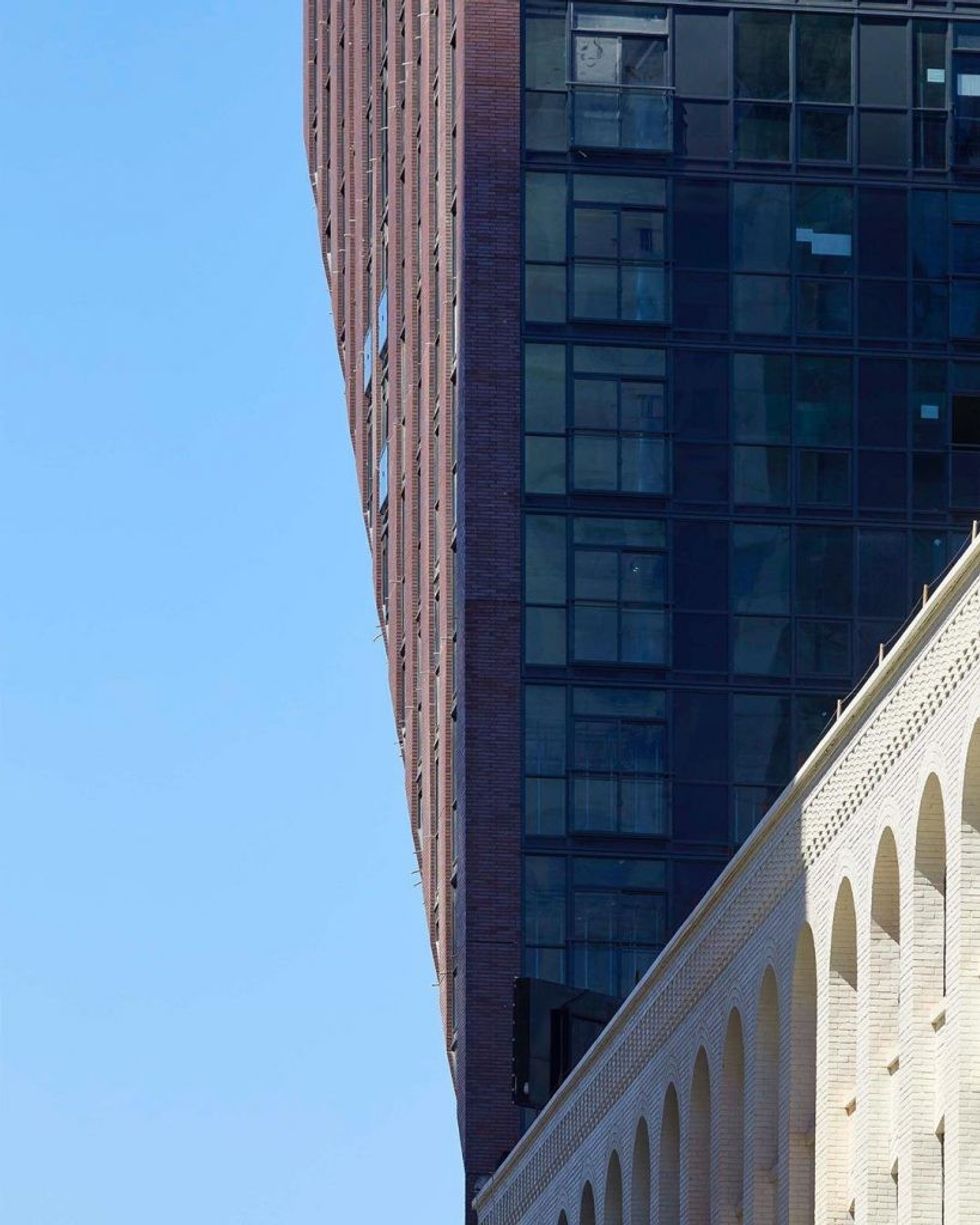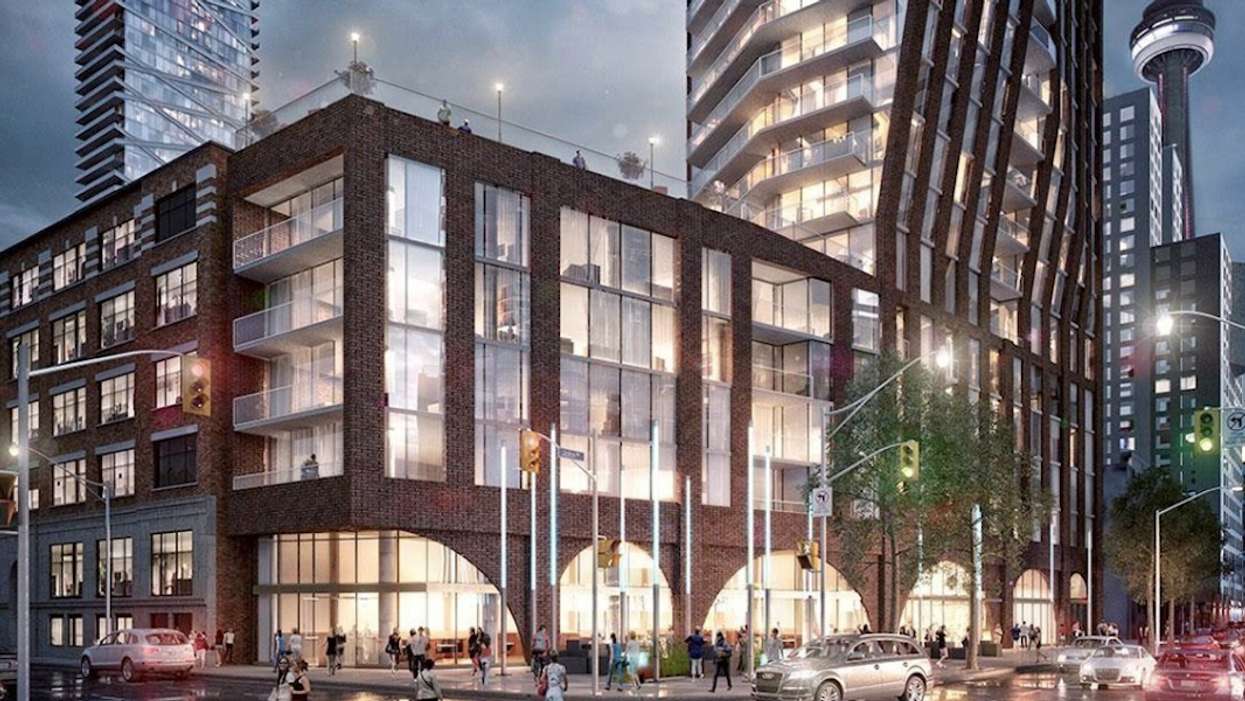At a time when residential towers tend to take more from the city than they give, The PJ Condos are a welcome exception to the rule.
Now under construction on the east side of John Street, between Pearl and Adelaide, the 48-storey structure is not just another high-rise development, it’s an emphatic act of city building. Though many projects have the generic, even anonymous, quality of a scheme conceived in a vacuum, The PJ represents a robust yet sensitive response to the demands of an awkward but significant site in the heart of Toronto’s Entertainment District.
Located on the John Street Cultural Corridor, it will play a role on an important downtown artery that runs from Front Street north to Grange Park and the Art Gallery of Ontario. The city’s plans to create an enhanced streetscape “that is accessible, beautiful and pedestrian-friendly” have yet to take shape, but already it’s clear The PJ Condos will contribute majorly to that goal.
READ: Construction Officially Begins on Tallest Residential Tower in Canada
The reason lies not in the addition of a new high-rise to the skyline, rather in what does lie down below at street level. Typically, the people, planners and politicians of Toronto are fixated on height -- which scares them to no end -- but the more critical question is how a tower meets the ground. This, after all, is where we spend most of our time and where urban life reveals itself.
This is also where The PJ shines.
By setting the building back from the corner of Adelaide and John, the architects have opened up the already extra-wide sidewalk to allow for a small plaza that has room for several planters as well as a bench or two. As well, the public space at The PJ diagonally connects to the POPS of its sister building, The Pinnacle at Adelaide.

Moves like this go a long way in making Toronto a more liveable city, instead of simply one we drive through on the way from one place to another. As the pandemic has shown us, urban streets can be used for vastly better things than vehicular traffic. Handed over to pedestrians, bikes, and restaurants, they can have a hugely positive impact -- economically, culturally, and socially. Indeed, reimagined, they can help transform the city. This enlightened approach can be seen in every aspect of The PJ Condos.
To regain space lost at ground level, the tower reaches out gently over the sidewalk, but in a way that avoids the sort of claustrophobic overhang evident in a growing number of projects, often as a way to accommodate the dead facades of heritage structures that have otherwise been gutted. Here, the extension has been incorporated into the exterior smoothly. This adds a degree of visual interest to the John St. façade not often found in the rigid orthogonality of conventional neo-modernist condo architecture.
It helps, too, that the tower’s faux-masonry cladding brings warmth to the tower and enables it to fit in with a district once known for its brick factories and warehouses. Though many of these old heaps have been torn down, enough remain to ensure the area has a distinct and now very desirable flavour. The glass-and-steel high-rises with which the area abounds still feel uncomfortable and out of place.

And let’s not forget the arches that define the five-storey podium at street level. Rendered in a kind of contemporary Romanesque style, they bring much-needed transparency and porosity to a project that, again, anticipates the idea of John Street as a cultural corridor. Whether the ground floor spaces are occupied by bars, restaurants, or retail outlets, they will enjoy a strong and very cosmopolitan connection to the city.
For Hariri Pontarini, the Toronto architectural firm behind The PJ Condos, the project marks a turning point. It indicates a willingness to put context before spectacle. Instead of opting for the sort of noisy stand-alone architecture that has left Toronto less than the sum of its cacophonous parts, Hariri Pontarini and its client, Pinnacle International, has taken their cues from the site and city. What the tower lacks in novelty, it gains by being part of something larger.

One can only hope that this embrace of contextualism is a signal that Toronto has finally started to exert some control over the hyper-growth that, in recent decades, has radically changed the downtown core. The challenge now is to knit the city into a coherent whole. The point isn’t that every corner of the city should look the same, but that we learn how to unify differences within an urban framework strong enough to keep the city -- its neighbourhoods, blocks and streets -- from flying apart into a disjointed patchwork of elements.
There’s no question Toronto is growing bigger, the issue now is to ensure it’s growing better.





















